Instructional Series
Welcome to the English medium literacy instructional series teaching and learning resources for years 1 to 8.

- 2
- 3
- 4
- English
- Social Sciences
- Science
- Health and Physical Education
- The Arts
- Technology
- Mathematics and Statistics
- Learning Languages
- Fiction
- Non-fiction
- None
- Articles
- Stories
- Poems
- Plays
Search results
138 items - Showing 121 - 130
-
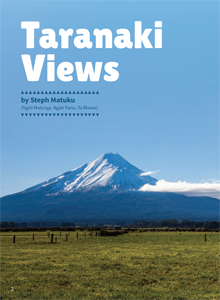
Taranaki Views
by Steph Matuku
“Taranaki Views” is a lengthy article that offers a range of perspectives on Taranaki Mounga. (“Mounga” is a Taranaki iwi pronunciation and spelling; it’s spelt “maunga” by most other iwi.) The text is written in two parts, the first presenting historical and geographical information about the mounga and incorporating the views of scientists and mana whenua. The second part is based on interviews with local people and focuses on what the mounga means to them.
-

The Story of Taranaki
by Hone Rata, illustrations by Taupuruariki Whakataka Brightwell
This traditional story, known by many iwi in the Taranaki area, tells how Mount Taranaki was once called Pukeonaki and stood in the centre of the North Island, close to Mount Tongariro. The two mountains fought over Pihanga, a nearby mountain. Tongariro won and Pukeonaki left in anger and grief, travelling to his present position and forming the Whanganui River on the way. The people who came to live in the region later named him Taranaki.
-
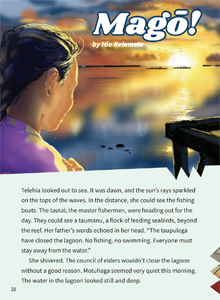
Magō!
by Hio Kelemete, illustrations by Vaitoa Baker
This is a humorous, entertaining story based on a true event. It provides examples of characterisation and dialogue as well as being a model for imaginative writing. This is a Pacific text. It provides a chance for Tokelauan and other Pacific students to see themselves and their culture reflected in the Journal.
-
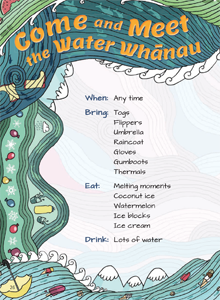
Come and Meet the Water Whānau
by Kerrin P. Sharpe
This poem links to “Our Blue Planet” in SJ L2 Nov 2019, showing how a topic can be approached in various ways in different genres. The poem takes the form of an invitation, with a series of headings and lists of single words or two words relating to those headings.
-
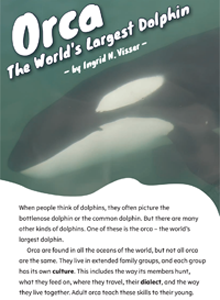
Orca – The World’s Largest Dolphin
by Ingrid N. Visser
This article shares information about orca and the research conducted by the author (Ingrid Visser runs the Orca Research Trust). It looks at how and why she carries out research and what is known about orca. It also covers some of the threats to their habitat and what we need to do to protect them. The article includes a text box about the various names given to orca and another with advice on how to act around orca should you encounter them.
-
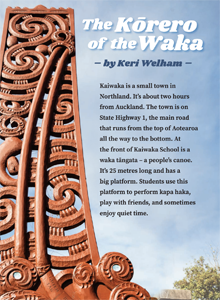
The Kōrero of the Waka
by Keri Welham
Te Waka Rangimārie o Kaiwaka is a 25-metre waka at the entrance to Kaiwaka School in Northland. The waka welcomes people to the school and is also enjoyed as a kapa haka platform, a play area, and a quiet place to sit. The focus of this article is on the whakairo (carvings) of the waka, which tell stories about the Kaiwaka area and the school community. The article includes a profile of carver Tim Codyre, who speaks of the rich and changing traditions of whakairo.
-
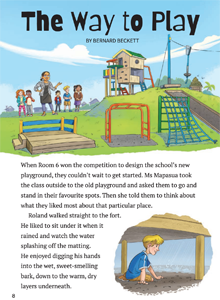
The Way to Play
by Bernard Beckett, illustrations by Scott Pearson
When Room 6 wins the competition to design the school’s new playground, they are really excited. However, when it comes to deciding on the design, differences of opinion emerge and the students have to work through the conflict to come up with a design that will suit them all. This story provides an opportunity to introduce and discuss the acceptance and celebration of difference.
-
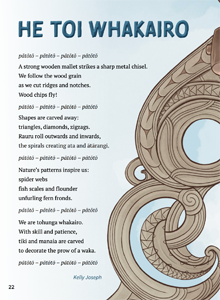
He Toi Whakairo
by Kelly Joseph, illustrations by Isobel Te Aho-White
This poem is about the art of whakairo, linking to the article about the Kaipara School carved waka in this Journal. It shows that a theme can be explored in various ways using different text forms. It also provides a model for poetic writing on a topic. Students will be able to think critically about the art of whakairo by making inferences and finding specific information. They will also be able to identify and evaluate the language features and structures the author has chosen for her particular purpose. It includes a glossary of te reo Māori terms used in the poem and a pictorial glossary showing four whakairo patterns.
-
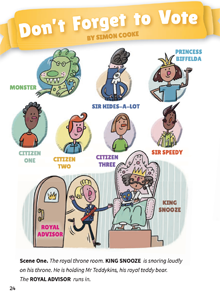
Don’t Forget to Vote
by Simon Cooke, illustrations by Beck Wheeler
This is a humorous play featuring the characters from “Let’s Vote on It” (SJ L2 May 2020). It’s based around the importance of voting so that you can have your say. The citizens want to replace the king – a vote is held, but the king forgets to vote and loses the election as a result. Plays provide opportunities for students to develop their oral language and performance skills. They will also be able to use the characters’ actions and dialogue to make inferences and interpret the play’s main message.
-
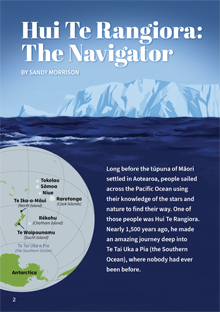
Hui Te Rangiora: The Navigator
by Sandy Morrison
Long before the tūpuna of Māori settled in Aotearoa, people sailed across the Pacific Ocean using their knowledge of the stars and nature to find their way. One of those people was Hui Te Rangiora. Nearly 1,500 years ago, he made an amazing journey deep into Te Tai Uka a Pia (the Southern Ocean), where nobody had ever been before.


 Literacy Online home
Literacy Online home
